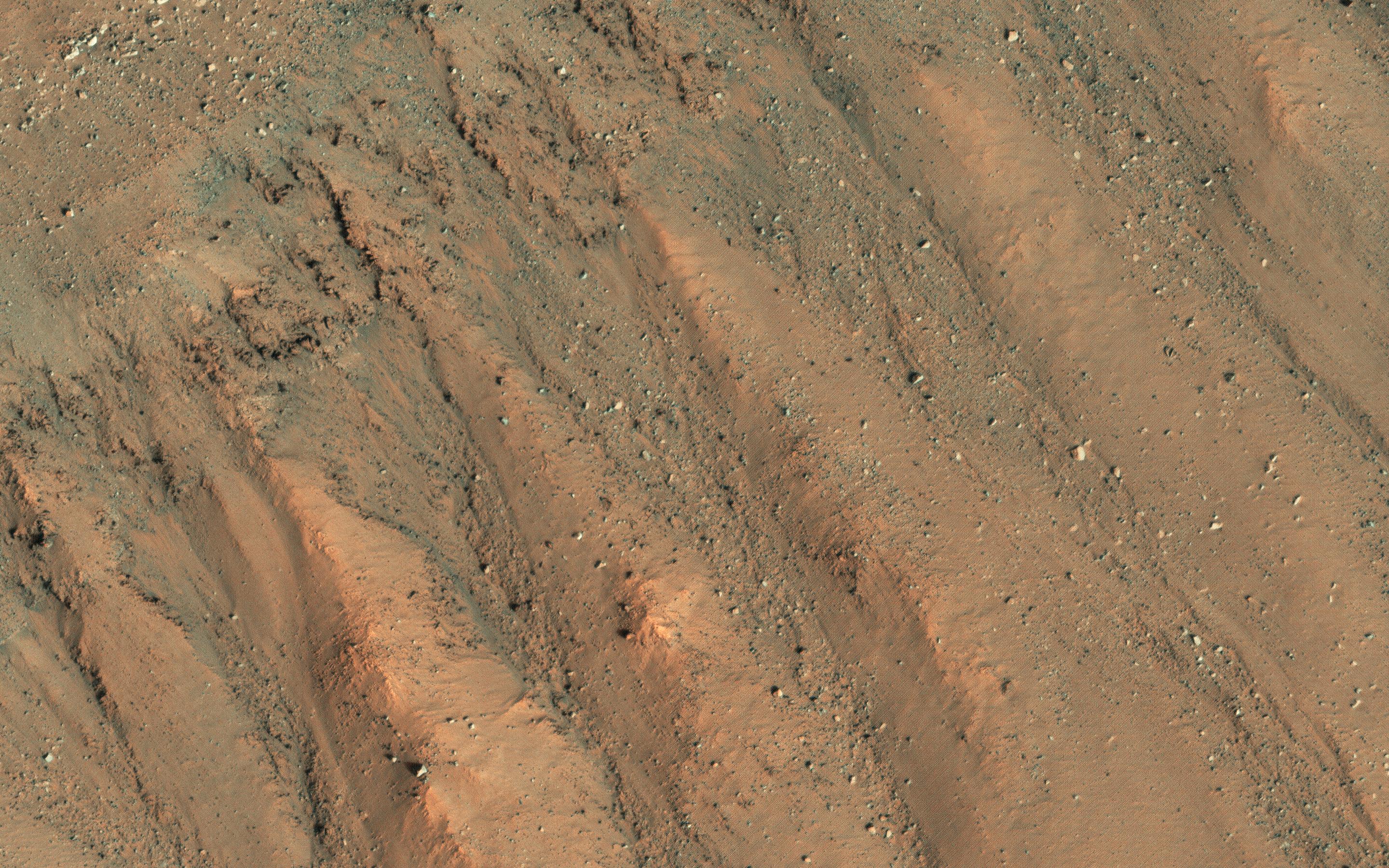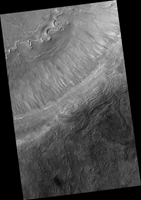
|
Faint Traces of Dark Flows
- Click the image above for a larger view
- Full-Res JPEG (2880 x 1800) (1.2 MB)
- Full-Res TIFF (2880 x 1800) (15.6 MB)
Caption:

Map Projected Browse Image
Click on image for larger version
This image shows some faint traces of dark flows along the headwall of an impact crater. These are relics of seasonal recurring slope lineae (RSL) that formed on an equator-facing slope.
They are not expected to be active yet, so we'll have to wait until later in the Martian spring for any changes. However, we like to monitor these sites as they progress through the seasons, and fully formed RSL have been identified at this site before.
That's because RSL recur each Mars year at the same places, like this crater wall. RSL activity often happens at predicted temperatures approaching minus 20 degrees Celsius (or minus 4 degrees Fahrenheit). An intermittent flow of brines is possible but dry flow of granules is an alternative explanation to explain RSL formation. Because of this uncertainty, the science community is debating whether these regions should be regarded as "special regions" where rovers or others landers are restricted.
The map is projected here at a scale of 25 centimeters (9.8 inches) per pixel. (The original image scale is 25.3 centimeters [10.0 inches] per pixel [with 1 x 1 binning]; objects on the order of 76 centimeters [29.9 inches] across are resolved.) North is up.
Background Info:
The University of Arizona, in Tucson, operates HiRISE, which was built by Ball Aerospace & Technologies Corp., in Boulder, Colorado. NASA's Jet Propulsion Laboratory, a division of Caltech in Pasadena, California, manages the Mars Reconnaissance Orbiter Project for NASA's Science Mission Directorate, Washington.
Cataloging Keywords:
| Name | Value | Additional Values |
|---|---|---|
| Target | Mars | |
| System | ||
| Target Type | Planet | |
| Mission | Mars Reconnaissance Orbiter (MRO) | |
| Instrument Host | Mars Reconnaissance Orbiter | |
| Host Type | Orbiter | |
| Instrument | High Resolution Imaging Science Experiment (HiRISE) | |
| Detector | ||
| Extra Keywords | Color, Crater, Impact, Map | |
| Acquisition Date | ||
| Release Date | 2020-06-02 | |
| Date in Caption | ||
| Image Credit | NASA/JPL-Caltech/University of Arizona | |
| Source | photojournal.jpl.nasa.gov/catalog/PIA23951 | |
| Identifier | PIA23951 | |
